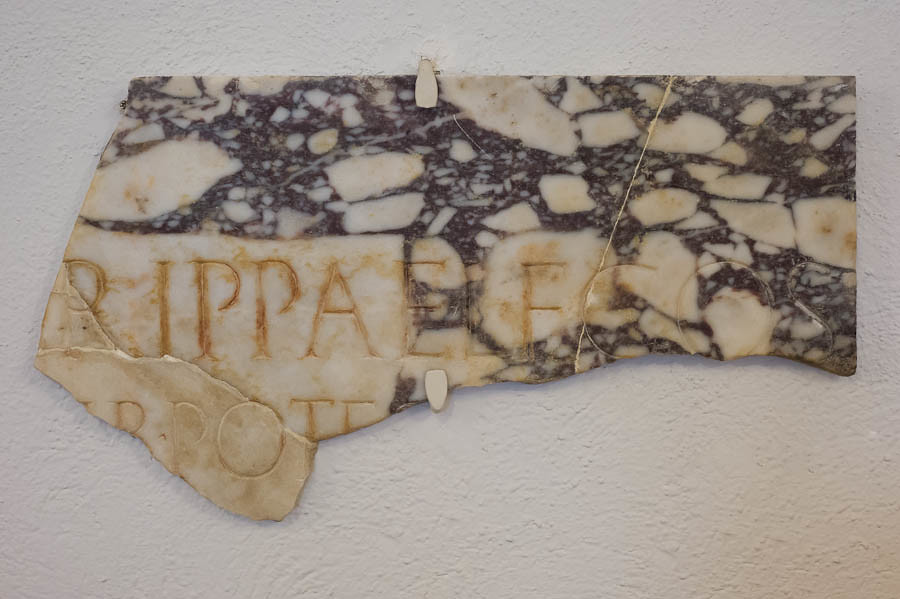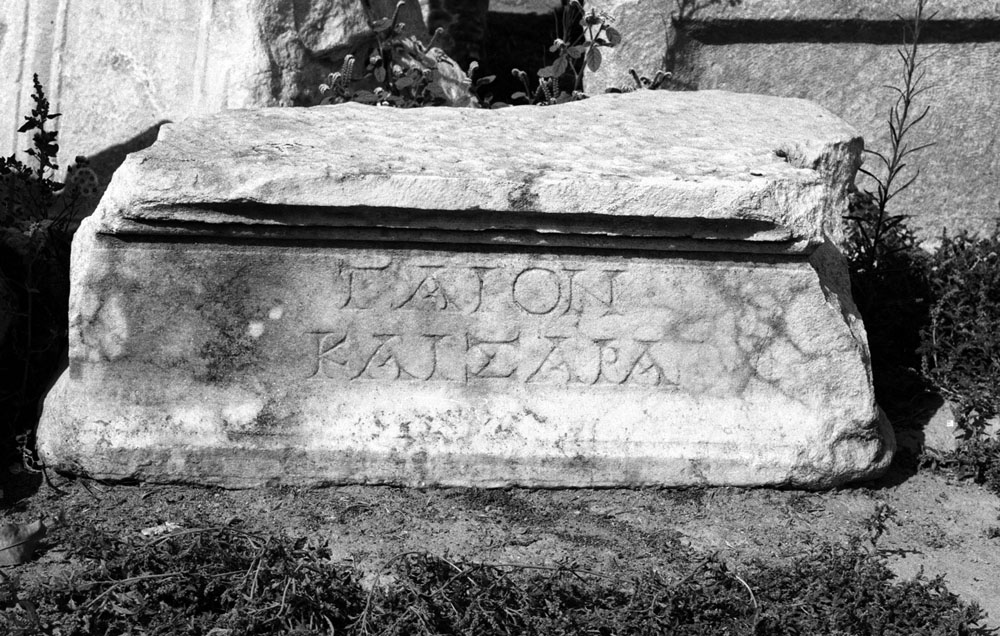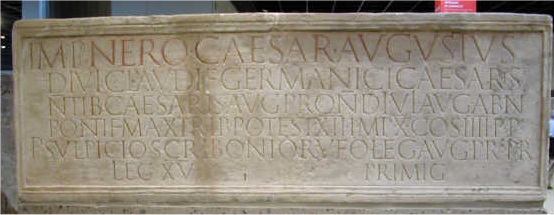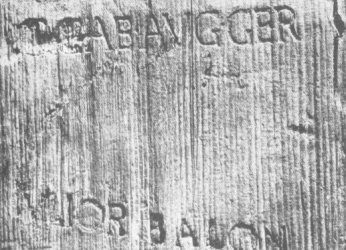Fragmentary marble inscription- used under the Met 's guidelines www.metmuseum.org
Period: Julio-Claudian Date: mid-1st century A.D. Culture: Roman, Cypriot Medium: Marble, blue Dimensions: Overall: 8 5/8 x 7 in. (21.9 x 17.8 cm) Classification: Cesnola Inscriptions Credit Line: The Cesnola Collection, Purchased by subscription, 1874–76 Accession Number: 74.51.2396
This artwork is currently on display in Gallery 171 From Cyprus, said to be from Kition (modern Larnaka)
Probably part of an honorific inscription, but the incomplete nature of the surviving block does not allow for an exact restoration of the text. The presence of the name Clau[dius] at the end of line 3 gives an indication of the inscription 's date.
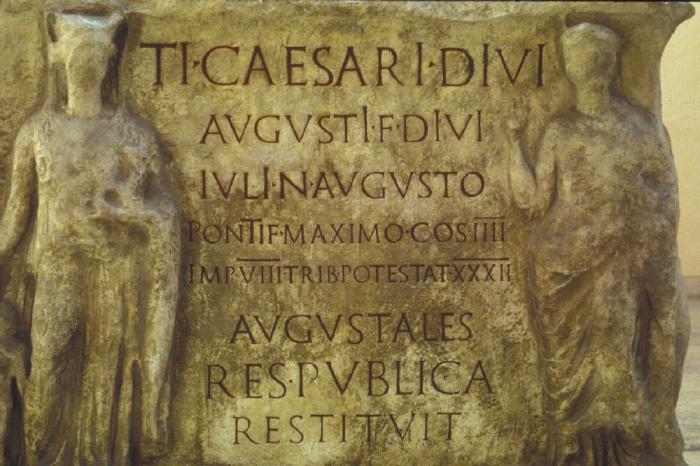
CIL 10, 01624 = ILS 00156 Thanks Amphipolis
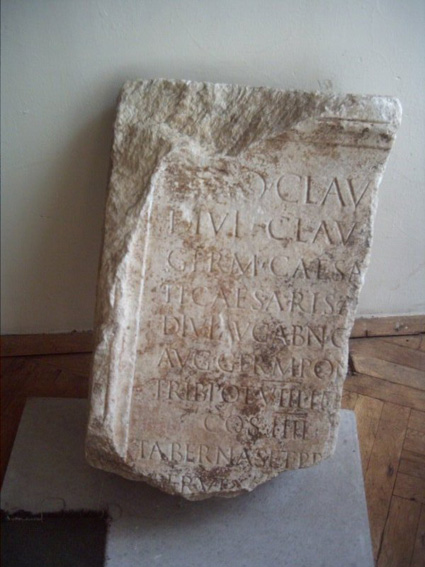
Dedication to
NERO- with damnatio effect.
Nero 's inscriptions are
rare due to erasure of most monuments.
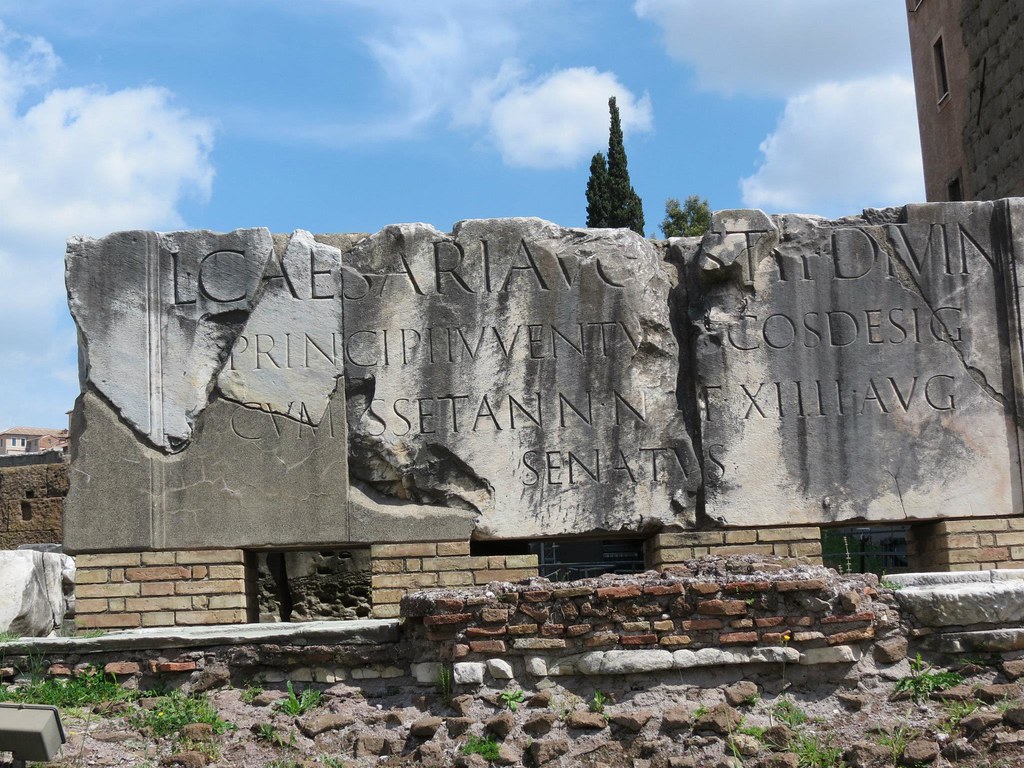
Dedication to grandson of Augustus, Lucius Caesar- Roman Forum- Photo by Jeff Watson
CIL 06, 40307 = AE 1996, 00246
Imp(eratori) Caisari divi f(ilio) / Augusto / pontifici maximo co(n)s(uli) XI / tribunicia potestat(e) XI // Neroni Claudio divi / Claudii f(ilio) / Germanici Caisaris n(epoti) / Ti(beri) Caisaris Aug(usti) pron(epoti) / divi Augusti abn(epoti) / Caisari Aug(usto) Germanico pont(ifici) / max(imo) trib(unicia) potest(ate) II imp(eratori) co(n)s(uli) // Ti(berio) Claudio Drusi f(ilio) / Caisari Augusto / Germanico pontifici / maximo tribunicia pot(estate) / imp(eratori) co(n)s(uli) II // Iuliae Au[gustae] / Agri[ppinae] / Germanic[i Caesaris f(iliae)] / divi Cla[udi uxori] // Aenatores tubicines liticines cornicines Romani/ Romani

Roman theatre, Lepcis Magna, Libya. Bilingual inscription in Latin (at the top) and Punic (at the bottom). The Latin reads from left to right, the Punic from right to left. It records that the building of the theatre was paid for, and dedicated by a local richman called Annobal Rufus in AD 1-2.
Latin text and Photo S. Girault
Imp(eratore) Caesare divi f(ilio) Aug(usto) pont(ifice) max(imo) tr(ibunicia) pot(estate) XXIV
co(n)s(ule)XIII patre patriae
Annobal ornator patriae amator concordiae
flamen sufes praef(ectus) sacr(orum)
Himilchonis Tapapi f(ilius) Rufus
d(e) s(ua) p(ecunia) fac(iundum) coer(avit) idemq(ue) dedicavit.
IRT 322.
English translation:
When the father of the fatherland, Caesar Augustus, son of the deified [Caesar], was pontifex maximus, vested with the tribunician power for the twenty-fourth time, being consul for the thirteenth time, Annobal Rufus, the adorner of his country and lover of concord, priest, suffete, prefect of the sacred objects, the son of Himilco Tapapius, took care to build this at his own expense, and dedicated it.
The Latin text begins with the names and titles of the emperor (in this case Augustus). None of these are given in the Punic text.
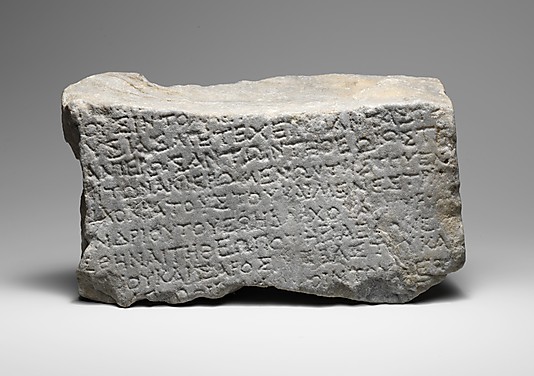
Part of an decree regulating sacrifices and offerings at a temple site. The name of the reigning emperor is lost but can be restored as Tiberius (r. A.D. 14-37), Gaius Caligula (r. A.D. 37-41), or Claudius (r. A.D. 41-54). The fragment also contains another Roman name, Quintus Sergius, and some scholars have tried to identify this man as the famous Roman governor of Cyprus, Sergius Paulus, who befriended St. Paul.
Fragment of an inscribed marble block
Period: Julio-Claudian Date: 1st half of 1st century A.D. Culture: Roman Medium: Marble, blue gray Dimensions: Overall: 5 1/2 x 9 1/4 x 3 in. (14 x 23.5 x 7.6 cm) Classification: Cesnola Inscriptions CreditLine: The Cesnola Collection, Purchased by subscription, 1874–76 Accession Number: 74.51.2425
This artwork is currently on display in Gallery 171
Used under Met Guidelines: www.metmuseum.org
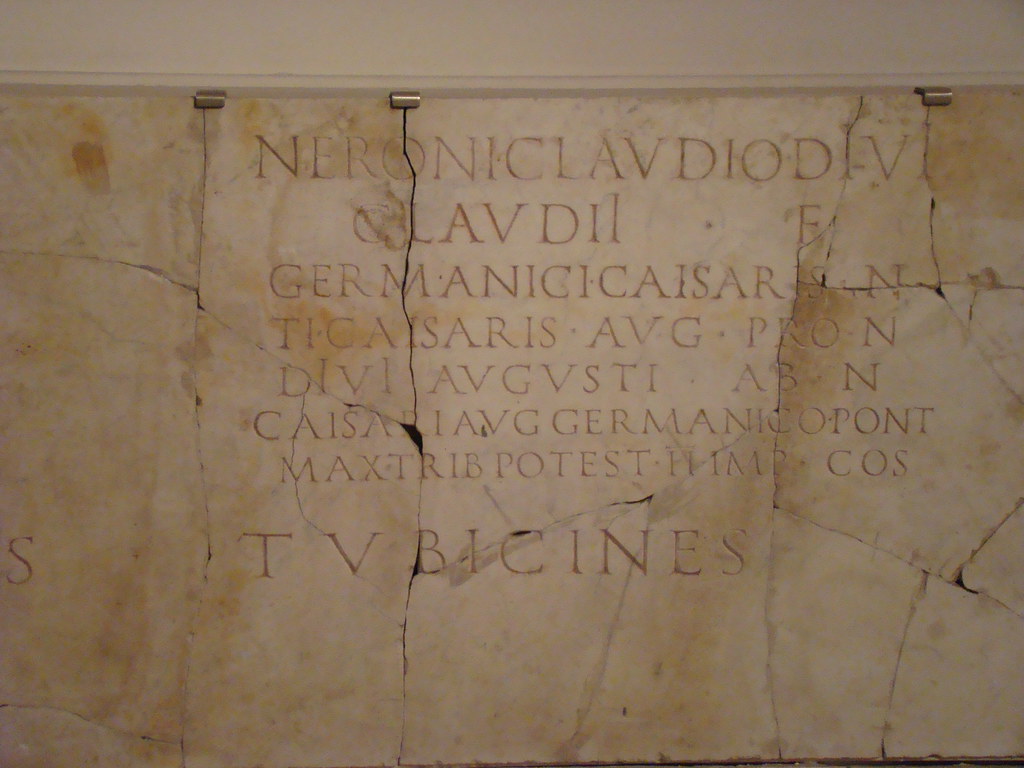
Monument for Imperial Cult- Photo Romanus tu
Museo Nazionale Romano at the Baths of Diocletian - Marble base, near the north-eastern slope of the Palatine, for a shrine for the imperial cult, dedicated by the "aenatores" (musicians who played bronze instruments) - here, by the "tubicines" ("tuba", trumpet)
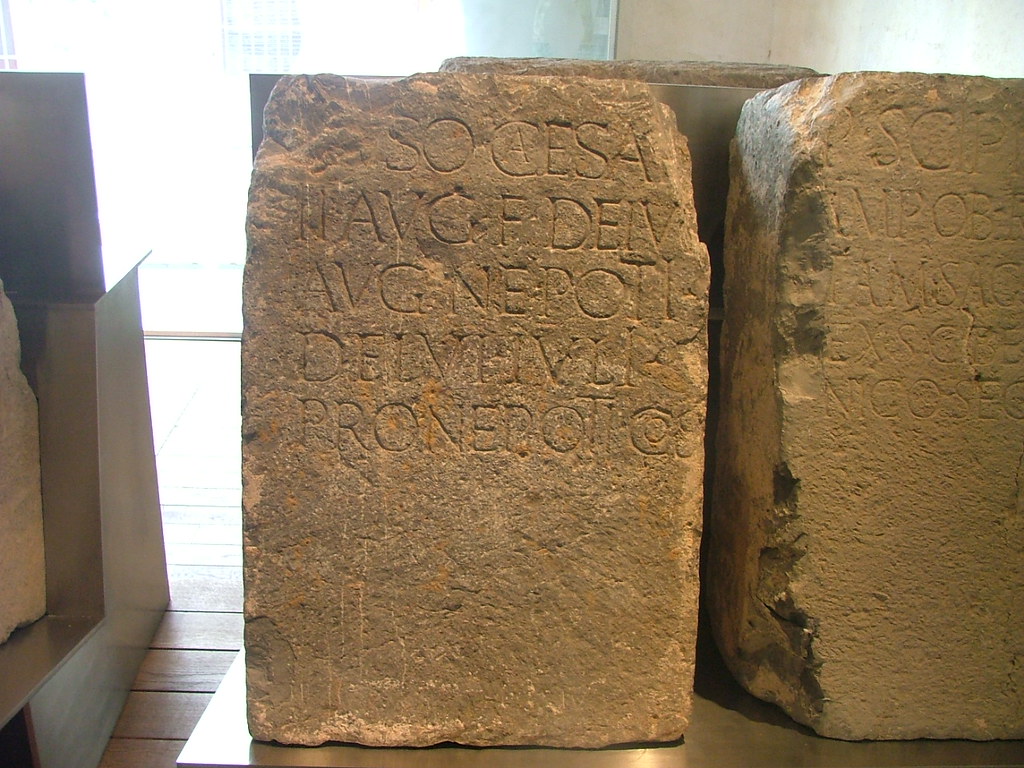
Dedication by Drusus to Jove-Son of Tiberius
Pedestal con inscripción imperial dedicada a Druso el Joven: «A Druso César, hijo de Tiberio Augusto, nieto del divino Augusto, biznieto del divino Julio, cónsul.» Siglo I adC, época Julio Claudia. Excavaciones del Cardenal Despuig. Castillo de Sagunto. Museo Arqueológico de Sagunto, nº 1.5.
CIL 02-14, 00309 = CIL 02, 03829 (p 967) = D 00167 = ELST 00014 = IRSAT 00023 = ILS 167 = ILER 1058
Date30 March 2008
SourceOwn work
AuthorDorieo
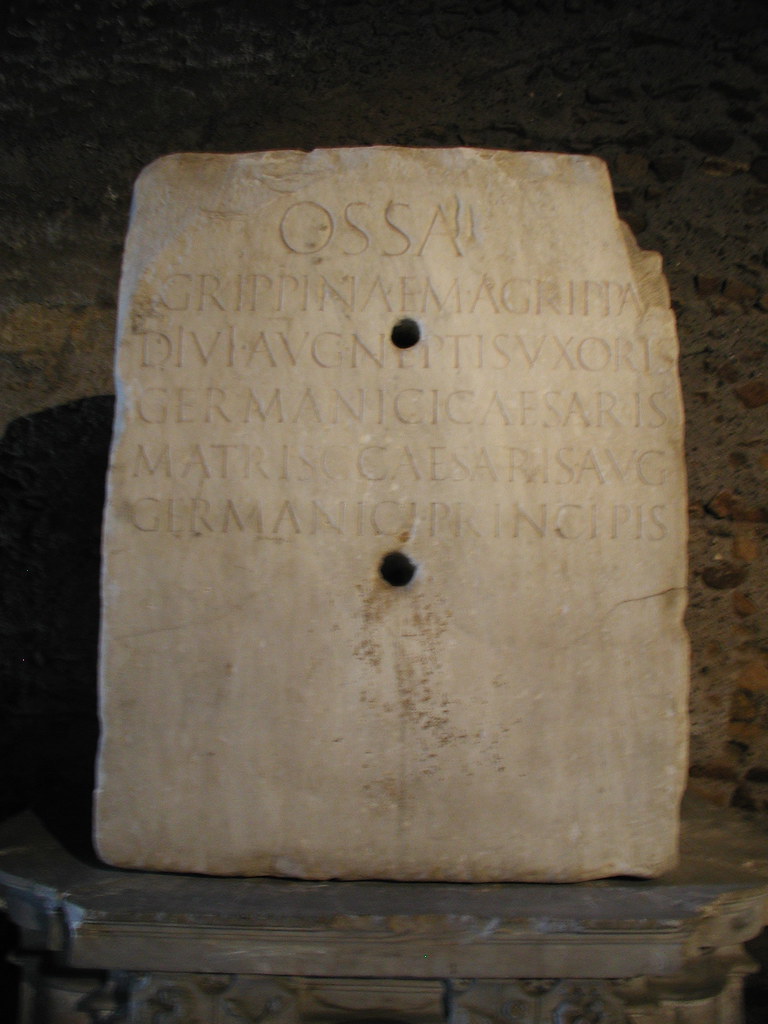
probably from Augustus ' mausoleum, where her son Caligula had her ashes delivered (from Pandateria where she was exiled and starved herself to death in 33 CE) when he became emperor in 37 CE. Inscription: OSSA/AGRIPPINAE M[ARCI] AGRIPPAE/DIVI AVG[usti] NEPTIS VXORIS/GERMANICI CAESARIS/MATRIS C[AI] CAESARIS AVG[USTI]/ GERMANICI PRINCIPIS (CIL 6.886). A cavity (not visible) on top once held the urn with her ashes. Rome: Passaggio del Muro Romano (Museo Nuovo) of the Museo del Palazzo dei Conservatori. Credits: Ann Raia, 2007 photo Mr. Jennings
From a statue base from Aphrodisias-
Honours for Gaius Caesar -Rien Bongers
Nero Dedication- VROMA.org
Photo - livius.org
n 40, the emperor Caligula visited Fectio when he was travelling to Lugdunum. The remains of a wine barrel from his personal vinyard have been found. Some thirty years later, the fortress was destroyed during the Batavian revolt and rebuilt as base of a cavalry squadron. The river Rhine had already started to silt up, and was later to change its course. Pottery from the kilns of the Twenty-second legion Primigenia at Xanten belongs to this period.

